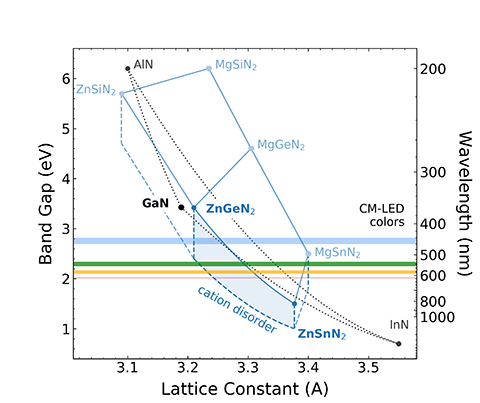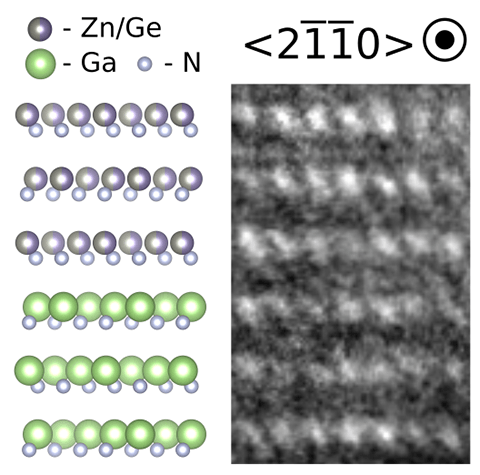Solid-State Lighting Research
NREL’s solid-state lighting research focuses on new emitter materials for green-gap LEDs and how to integrate those materials into scalable materials platforms.

New Emitter Materials
Our research focuses on discovery of new direct bandgap semiconductors with bandgaps from 2.0 to 2.4 eV for efficient green and amber emission. These materials are primary nitrides, which show highly efficient radiative recombination. Some of the research also involves materials with tunability, using cation order and disorder in ternary compounds to tune the band-to-band transition to an ideal value for emitters.

Integration of Emitters With Scalable Materials Platforms
We find heteroepitaxial partners for new emitter materials, which allow efficient current injection, namely materials that are wide bandgap and bipolar dopable. For many nitrides, this platform is a member of the III-N system like GaN. The research primarily focuses on interface quality of integrated dissimilar thin films, analyzing the creation and propagation of defects and their impact on the emitter material.
Project
The work on solid-state lighting materials is funded by the U.S. Department of Energy (DOE) through the Office of Energy Efficiency and Renewable Energy, Building Technologies Office.
A 2019–2022 DOE project—called Closing the Green Gap in GaN-Based LEDs Using Ternary Nitride Semiconductors—investigates device-relevant material parameters of ternary nitride semiconductors (Zn,Mg)(Ge,Sn)N2, improving our understanding of epitaxial growth capabilities and limitations. The project also explores the integration of hybrid binary/ternary nitrides such as ZnGeN2 and GaN, first through interface studies and also through full device stacks, to extend the efficient emission window of III-N LEDs into the green and amber spectral range.
Selected Publications
Ternary Nitride Materials: Fundamentals and Emerging Device Applications, Annual Reviews on Materials Research (2021)
Combinatorial Synthesis of Magnesium Tin Nitride Semiconductors, Journal of the American Chemical Society (2020)
Heteroepitaxial Integration of ZnGeN2 on GaN Buffers Using Molecular Beam Epitaxy, Crystal Growth and Design (2020)
Contacts
Share
